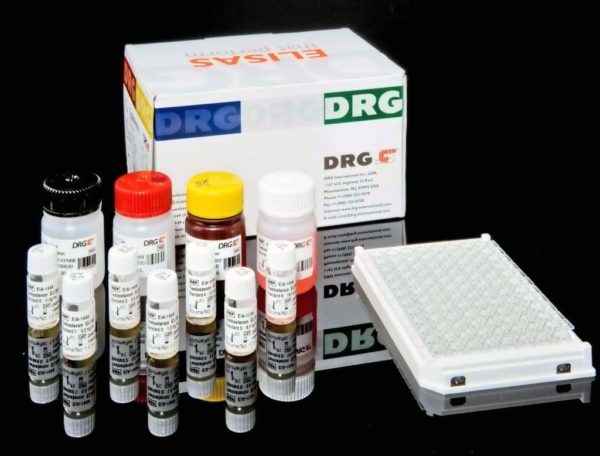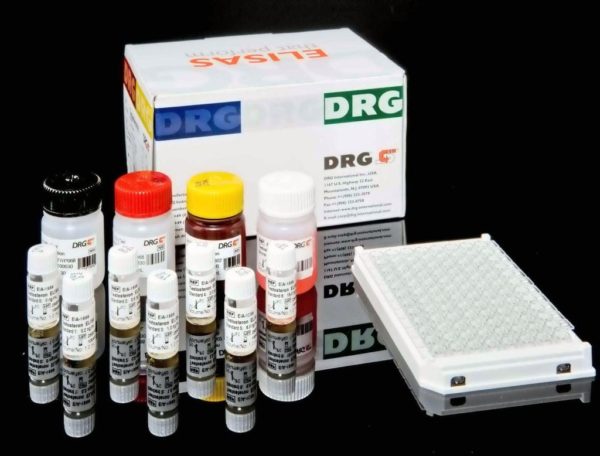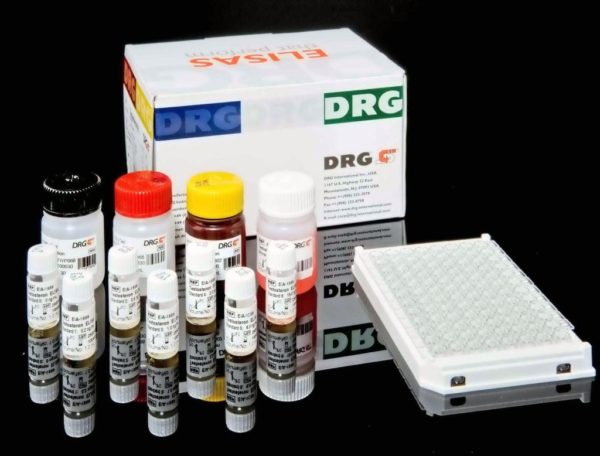Description
Competitive immunoenzymatic colorimetric method for quantitative determination of free Cortisol concentration in Urine.
Urinary Cortisol ELISA kit is intended for laboratory use only.
Cortisol is a steroid hormone released from the adrenal cortex in response to an hormone called ACTH (produced by the pituitary gland), it is involved in the response to stress; it increases blood pressure, blood sugar levels, may cause infertility in women, and suppresses the immune system. Cortisol acts through specific intracellular receptors and has effects in numerous physiologic systems, including immune function, glucose-counter regulation, vascular tone, substrate utilization and bone metabolism. Cortisol is excreted primarily in urine in an unbound (free) form. Cortisol is bound, in plasma, from corticosteroid-binding globulin (CBG, transcotin), with high affinity, and from albumin. Only free cortisol is available to most receptors. These normal endogenous functions are the basis for the physiological consequences of chronic stress – prolonged cortisol secretion causes muscle wastage, hyperglycaemia, and suppresses immune / inflammatory responses. The same consequences arise from long-term use of glucocorticoid drugs. The free cortisol fraction represents the metabolically active cortisol. In normal conditions, less then 1% it comes excrete in urines. In pathological conditions (syndrome of Cushing) the levels of free urinary cortisol are elevate, because the CBG donÕt bound the plasmatic cortisol in excess and it was remove with urines. During pregnancy or estro-progestogen treatment an increase of plasmatic cortisol caused by an increment of the production of the transport protein, but the levels of free urinary cortisol results normal to indicate a correct surrenic functionality.
This test is very useful to estimate the real surrenic function, because is dose the free cortisol, it is the metabolically active form. Moreover the measurement of free urinary cortisol is the better parameter for the diagnosis of the CushingÕs syndrome.
The Cortisol (antigen) in the sample competes with the antigenic Cortisol conjugated with horseradish peroxidase (HRP) for binding to the limited number of antibodies anti Cortisol coated on the microplate (solid phase). After incubation, the bound/free separation is performed by a simple solid-phase washing. Then, the enzyme HRP in the bound-fraction reacts with the Substrate (H2O2) and the TMB Substrate and develops a blue color that changes into yellow when the Stop Solution (H2SO4) is added. The colour intensity is inversely proportional to the Cortisol concentration of in the sample. Cortisol concentration in the sample is calculated through a calibration curve.




